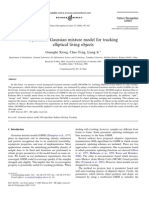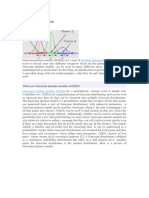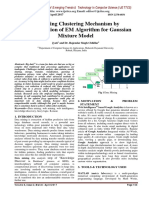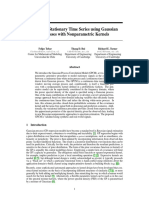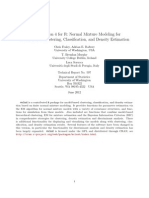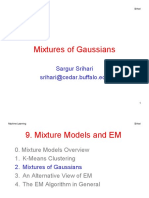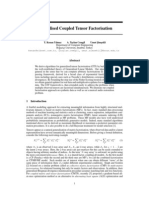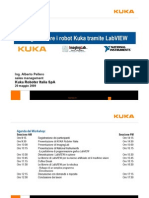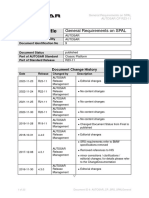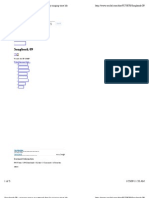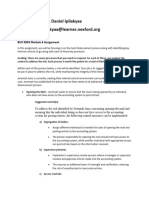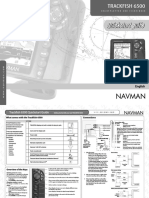0% found this document useful (0 votes)
65 views28 pagesGaussian Mixture Models in Fault Detection
This document discusses Gaussian mixture models (GMM), their construction and applications. GMMs represent a probability distribution as a weighted sum of multiple Gaussian distributions. The document provides a 3-step process for constructing a standard GMM using maximum likelihood and the EM algorithm. It then presents two case studies: [1] using GMMs to model and monitor sludge profiles in a secondary wastewater treatment settler, and [2] developing residual and fault detection criteria based on the GMM. The document concludes that GMMs provide a novel tool for fault detection in wastewater treatment processes.
Uploaded by
vothaianh18081997Copyright
© © All Rights Reserved
We take content rights seriously. If you suspect this is your content, claim it here.
Available Formats
Download as PDF, TXT or read online on Scribd
0% found this document useful (0 votes)
65 views28 pagesGaussian Mixture Models in Fault Detection
This document discusses Gaussian mixture models (GMM), their construction and applications. GMMs represent a probability distribution as a weighted sum of multiple Gaussian distributions. The document provides a 3-step process for constructing a standard GMM using maximum likelihood and the EM algorithm. It then presents two case studies: [1] using GMMs to model and monitor sludge profiles in a secondary wastewater treatment settler, and [2] developing residual and fault detection criteria based on the GMM. The document concludes that GMMs provide a novel tool for fault detection in wastewater treatment processes.
Uploaded by
vothaianh18081997Copyright
© © All Rights Reserved
We take content rights seriously. If you suspect this is your content, claim it here.
Available Formats
Download as PDF, TXT or read online on Scribd
/ 28
